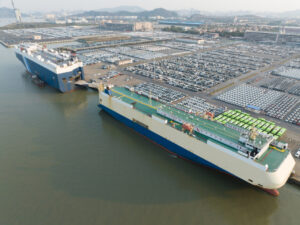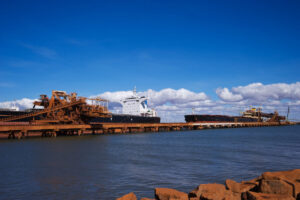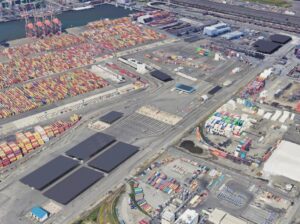Port congestion at major northern European container terminals is expected to persist into July, with operational challenges and global trade disruptions compounding delays.
According to Bloomberg, key gateways such as Antwerp, Rotterdam, Hamburg, and Bremerhaven are reporting escalating backlogs, with vessel waiting times stretching from several days up to two weeks.
These delays are being driven by a combination of factors, including recent industrial action, low water levels on the Rhine limiting barge capacity, and high yard utilisation at terminals.
In Antwerp, a nationwide strike on 20 May caused significant disruption, resulting in a severe backlog that will take time to clear: “We are adjusting the vessel schedule based on the available chain capacity. Because of high demand, there is currently a shortage of sea and river pilots,” the port authority commented.
“As a result, a handful of vessels still have no prospect of a time of embarkation or disembarkation. All chain partners are making the necessary efforts to restore normal shipping traffic as soon as possible.”
READ: StormGeo, Awake.AI deliver AI-powered port congestion insights
Shipping lines are responding by rerouting vessels and introducing congestion surcharges, while some terminals have restricted the acceptance of empty containers to manage yard space.
The situation is further complicated by an early peak season for transpacific trade, fuelled in part by a temporary pause in US–China tariffs, which has prompted shippers to accelerate cargo movements ahead of the July deadline.
READ: Transpacific trade braces for post-tariffs cargo surge
The congestion is not limited to Europe. Similar patterns are emerging at major ports in China and the United States, with vessel queues growing in Shanghai, Shenzhen, Los Angeles, and New York.
Industry analysts warn that ongoing disruptions in Europe could have knock-on effects for global supply chains, potentially pushing up shipping rates and extending transit times for cargo bound for the Middle East, Asia, and North America.
Bloomberg reports that the current bottlenecks are likely to continue into July, as ports and carriers contend with a combination of increased cargo volumes, labour shortages, and operational bottlenecks.
Emergency measures, such as modifying berth priorities and reducing export delivery windows, are being implemented to ease congestion, but these actions are also contributing to longer transit times.








